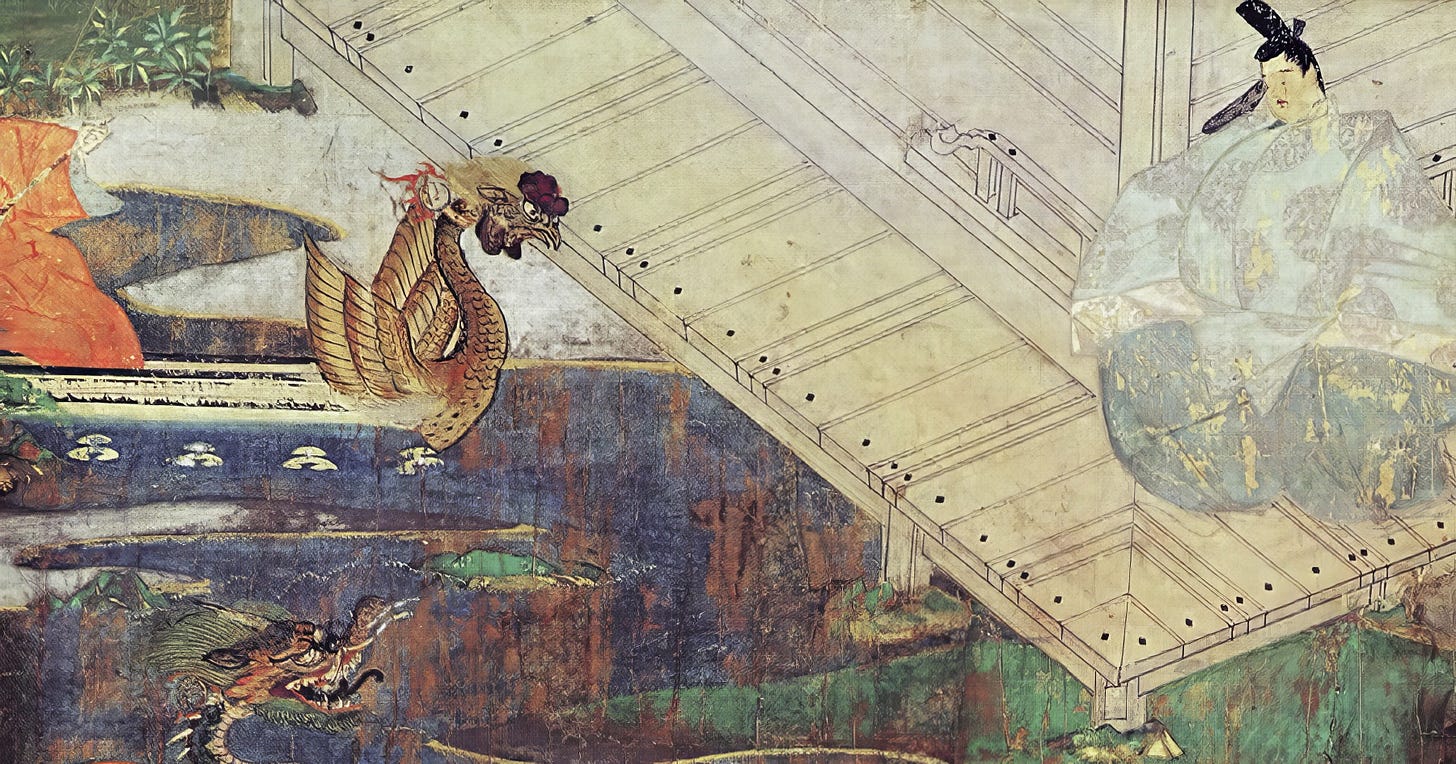Heian Aristocracy’s Decline and the Emergence of the Samurai
Fujiwara’s Fall and the Samurai’s Rise in Japan’s Political Shift
In this article, I discuss the depravity of the Heian-period aristocracy (784–late 12th century) that paved the way for the emergence of the samurai class.
Generally, scholars see the decisive decline of the aristocracy toward the end of the Heian period as a major factor behind the rise of the samurai. The first warrior-led government (bakufu) to emerge from this power shift was that of the Taira clan (Heike), which ruled from around the 1160s to 1185.
Yet, the seeds of this new era were sown more than a century earlier. At the heart of the transition was the Fujiwara clan’s despotic rule. Originally gaining prominence in the Asuka period (593–710), the Fujiwara leveraged the political acumen of Fujiwara no Fuhito (659–720), who brought the emperor under his sway, to establish an unassailable position at court.
After Fuhito’s death, his four sons split into four branches, and intense power struggles ensued. By the Heian period, the Fujiwara—already in a tight-knit relationship with the imperial family—began openly wielding their influence.
One branch, Fujiwara Hokke, arranged marriages with the imperial line to consolidate its control over the state.
At the zenith of Fujiwara dominance stood Fujiwara no Michinaga (966–1028) from Fujiwara Hokke. He eliminated or exiled rival clans that threatened his power, establishing a de facto dictatorship. These political machinations destabilized the court, causing it to lose popular support.
Moreover, Michinaga possessed neither leadership skills nor ideals to guide the nation; he merely clung to a waning regime. Having no real vision, he became mired in luxury, and his lifestyle fell into decadence. In 1018, at the age of 53, he composed a poem reflecting his supreme self-confidence:
この世をば わが世とぞ思ふ 望月の 欠けたることも 無しと思へば
“I see this world as mine alone. Like the full moon with no lack, my satisfaction is complete.”
Indeed, court festivities in Michinaga’s era were held in astonishing succession, worsening the government’s finances.
Because the imperial court—Japan’s political center—was in such a state, corruption among provincial officials also grew severe. The biggest victims were common farmers, who fell into extreme poverty.
In times of famine or epidemic, countless people died, their bodies left to rot by the roadside. Historical accounts describe corpses even scattered around the Shishinden—the palace hall used for imperial ceremonies.
By this point, the Fujiwara government, both in the capital and the provinces, had all but ceased to function. Disgruntled young men from farming communities abandoned their homes and turned to banditry.
They rose up, attacking provincial governors and demanding radical political change from the central government, plunging much of the country into a lawless state. The imperial court, however, offered no meaningful response, continuing to indulge in luxury.
Amid this chaos, local clans that had long been rooted in the land—some of whom were exiled courtiers or Fujiwara who had voluntarily retreated from the capital—began to rise in prominence. They shared a deep resentment of Fujiwara rule, and by galvanizing local populations, they rapidly expanded their power.
In regions where the leading clans treasured their ancestral land and valued the welfare of the people, mutual trust grew especially strong, resulting in burgeoning economic strength.
Meanwhile, the near-constant threat of bandits and raiders forced these local groups to hone their martial skills. Over time, maintaining public order in the provinces came to depend almost entirely on them.
This new order eventually reached the aristocratic society in the capital, Kyoto. Nobles, facing severe financial troubles after long bouts of extravagance, found themselves unable to protect even their own persons. Under this pressure, they were forced to abandon their longstanding policies.
They had no choice but to invite warrior bands (buke) into the region around the capital, granting them official permission to provide security. This development was the greatest reason for the rise of the samurai.
As a result, local warrior clans steadily gained strength. While enduring the aristocracy’s oppressive governance, they bided their time, carefully watching for any chance to topple the noble-controlled regime.
It would take more than a century to achieve this, but the pivotal figures in that ultimate overthrow were the Taira clan led by Taira no Kiyomori (1118–1181) and the Minamoto clan led by Minamoto no Yoritomo (1147–1199).



